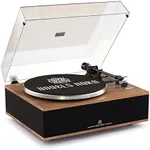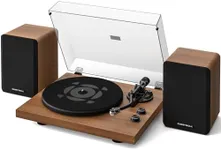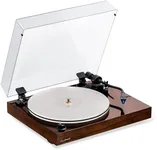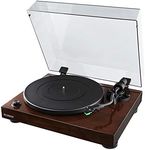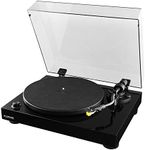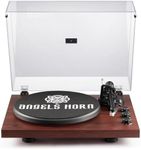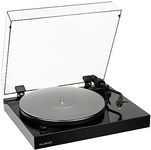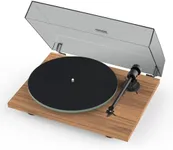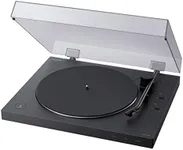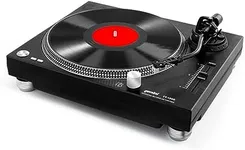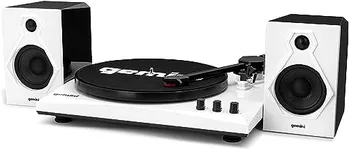Buying Guide for the Best Turntables With Preamps
Choosing the right turntable with a preamp can greatly enhance your vinyl listening experience. A turntable with a built-in preamp simplifies the setup process, allowing you to connect directly to speakers or amplifiers without needing an external preamp. When selecting a turntable, consider the following key specifications to ensure you get the best fit for your needs.Drive TypeThe drive type refers to how the turntable's platter is powered. There are two main types: belt drive and direct drive. Belt drive turntables use a belt to spin the platter, which can reduce vibrations and provide better sound quality. Direct drive turntables have the motor directly connected to the platter, offering more consistent speed and durability, making them ideal for DJs. If you prioritize sound quality for home listening, a belt drive might be preferable. If you need durability and precision for DJing, a direct drive is likely the better choice.
Platter MaterialThe platter is the surface on which the vinyl record sits. Common materials include aluminum, acrylic, and glass. Aluminum platters are durable and provide good sound quality. Acrylic platters can offer better resonance and reduce static, enhancing audio fidelity. Glass platters are aesthetically pleasing and can also provide good sound quality. If you are looking for durability and decent sound, aluminum is a solid choice. For audiophiles seeking the best sound quality, acrylic might be the best option.
Tonearm TypeThe tonearm holds the cartridge and stylus, guiding them across the record. There are straight and S-shaped tonearms. Straight tonearms are simpler and can be easier to set up, while S-shaped tonearms can offer better tracking and reduced wear on records. If you are new to turntables, a straight tonearm might be easier to manage. If you are more experienced and want to preserve your records, an S-shaped tonearm could be beneficial.
Cartridge and StylusThe cartridge and stylus are crucial for sound quality. The cartridge houses the stylus, which reads the grooves of the record. There are moving magnet (MM) and moving coil (MC) cartridges. MM cartridges are more common and affordable, providing good sound quality. MC cartridges can offer superior sound but are more expensive and require a compatible preamp. If you are looking for a balance of cost and quality, an MM cartridge is a good choice. For audiophiles seeking the best sound, an MC cartridge might be worth the investment.
Built-in Preamp QualityThe built-in preamp amplifies the signal from the turntable to a level suitable for speakers or amplifiers. The quality of the preamp can affect the overall sound. Higher quality preamps provide clearer, more detailed sound. If you are looking for convenience and simplicity, ensure the built-in preamp is of good quality. For those who want the best possible sound, you might consider a turntable with the option to bypass the built-in preamp and use an external one.
Speed SettingsTurntables typically offer speed settings of 33 1/3 RPM and 45 RPM, with some also supporting 78 RPM for older records. The speed setting determines how fast the record spins, which affects playback. Ensure the turntable supports the speeds of the records you own. If you have a collection of standard LPs and singles, 33 1/3 and 45 RPM are essential. If you have older 78 RPM records, make sure the turntable can accommodate them.
Build QualityThe overall build quality of the turntable affects durability and performance. Look for solid construction with quality materials to ensure longevity and stable playback. A well-built turntable will minimize vibrations and provide a better listening experience. If you plan to use your turntable frequently, investing in a model with high build quality is important to ensure it lasts and performs well over time.
